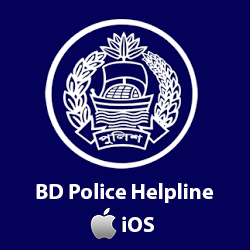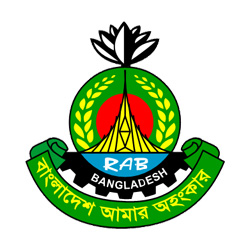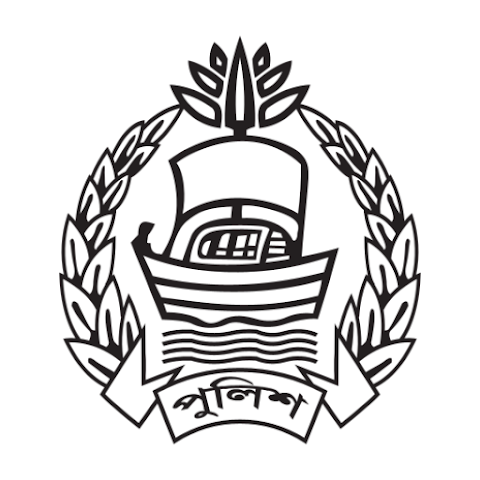ন্যাশনাল কমিউনিকেশন স্ট্রাটেজি ফর এফপি- আরএইচ বাংলাদেশ
The National Communication Strategy for Family Planning and Reproductive Health
Ministry of Health and Family Welfare Directorate General of Family Planning Dhaka, Bangladesh
November 2008
National Communication Strategy for FP-RH
List of Reviewers:
Md. Nurul Ameen
Assistant Representative, UNFPA
Dr. Ahmed Al Sabir
Director (Research), NIPORT
Mohammad Shahjahan
Director & CEO, BCCP
Mohiuddin Ahmed
NPPP (BCC & Advocacy), UNFPA
Md. Shahadat Hossain
Family Planning Officer, IEM Unit, DGFP
Foreword
Secretary
Ministry of Health and Family Welfare
Peoples Republic of Bangladesh
Bangladesh has made remarkable success in family planning and reproductive health programmes over the last two decades but still we have to invest more in family planning and reproductive health programmes. At the beginning of the new millennium with new challenges and opportunities all sectors need to develop their own strategies to move from where we are now today and to where we want to go. In the health, nutrition and population sector programme (HNPSP), this need has become more obvious as the success of national economy is largely dependent on its performance.
As the field of reproductive health is shifting in response to the ICPD while the current communication programs and strategies continue to view their audiences as instrumental to achieving specific health objectives, such as increased contraceptive prevalence rates, a newer generation of programs is taking a broader approach, seeking to influence social and cultural norms that shape behavior, build skills to foster behavior change among individuals and communities. Because communication programs try to affect the normative environment which influences attitude and behavior of adolescents, women and men and thereby determines their family size, birth spacing, use of contraceptives, health seeking behaviour and gender relations within communities and societies.
Government underscores the potential power of communication programmes to spotlight pressing issues related to safe motherhood, maternal and child mortality rates, dropout of FP methods, unmet needs, permanent and long-term methods and total fertility rate (TFR) etc. Comprehensive communication programmes help break the stigma and change the culture of quiet acceptance surrounding adolescent sexual and reproductive health and rights, and gender concerns in FP-RH and HIV/AIDS. Timely and targeted communication materials can impact on people in profound ways, and support and empower them to initiate change.
In this connection, the Ministry of Health and Family Welfare has been fortunate undertaking the development of National Communication Strategy for Family Planning and Reproductive Health with the generous support from the United Nations Population Fund (UNFPA). We express our sincere appreciation to UNFPA Bangladesh. This strategy has been formulated based on the feedback and inputs received from a wide range of stakeholders i.e. programme managers, researchers, communication experts of home and abroad to filed level FP/health workers and NGOs. The intelligence, expertise and intellectual labor of many persons, including DGFP and his team, members of the BCC Task Force, field level family planning officials, NGOs who generously shared their creative ideas and inputs in transforming the dream into reality, we thank them all.
This strategy reflects our firm commitment to reverse the high rate of maternal and child mortality, TFR and also to improve RH-FP status in Bangladesh through an institutionalized and strategic communication approach. Besides identifying specific target audiences, the strategy has outlined implementation plans for undertaking research, advocacy and mobilization programmes to address the emerging challenge in reproductive health and family planning sector. With this comprehensive strategy now in place, I hope, the development partners particularly UNFPA Bangladesh will continue to provide generous support and technical assistance towards implementation of different components of this strategy.
A K M Zafar Ullah Khan
Message
Communication is an integral part of the family planning and reproductive health approach to population related activities. Fundamental to the Health, Nutrition and Population Sector Programme (HNPSP) is the underlying principle, which places communication at the centre of population and development concerns. The National Communication Strategy for Family Planning and Reproductive Heath has been published to help the programme managers develop their action plans, to address the needs and concerns of adolescents, young people and, women and men of reproductive age for their FP and RH related education, information, counseling and services. We would like to mention here that this strategy development was a unique effort of all stakeholders, where the Directorate General of Family Planning (DGFP) and Ministry of Health and Family Welfare (MOH&FW) took a lead role together with other ministries/departments, NGOs and development partners.
Based on this strategy, we have to develop action plans to work with a ‘bottom-up’ approach. UNFPA Bangladesh has the privilege to work in partnership with the government particularly the Ministry of Health and Family Welfare to support the initiative of developing action plan and its implementation.
In connection with the formulation of this strategy, I would like to take the opportunity to extend my sincere thanks and gratitude to all concerned particularly the Joint Secretary (Dev), MOH&FW and his team, Director General of Family Planning and the members of the BCC Task Force who have contributed in making the ‘National Communication Strategy for Family Planning and Reproductive Health’ a reality.
This strategy will help guide all of us in designing IEC/BCC interventions to address the needs and choices of target audiences envisaged in the strategy. UNFPA believes that programme managers together with other stakeholders will take account of this strategy while designing and implementing IEC/BCC interventions in order to address the special needs and choices of the target population.
Let us intensify our coordinated and collective efforts towards making a long lasting impact in the lives of the people of the country in bringing a positive social change that will make every birth a safe and desired one and no woman dies while giving life because every one counts.
Arthur Erken
UNFPA Representative
Bangladesh
Table of Contents
Acronyms .................................................................................................................. vi
Executive Summary....................................................................................................1
Introduction................................................................................................................. 3
Methodology.............................................................................................................. 4
How to Use This Strategy.......................................................................................... 5
Current Family Planning and Reproductive Health Indicators for Bangladesh ........5
Past and Present Communication Initiatives to Address the
FP/RH Situation in Bangladesh ................................................................................. 7
Lessons Learned....................................................................................................... 10
Challenges to Communication, Advocacy, and Mobilization (CAM) in Bangladesh .....11
Goal and Strategic Objectives ................................................................................... 12
The Strategic Approach............................................................................................. 13
The Intended Audiences ........................................................................................... 14
Audience 1: Newlyweds and Low Parity Women ................................................. 14
Audience 2: Married Couples with Desired Family Size....................................... 17
Audience 3: Husbands/Males .............................................................................. 18
Audience 4: Poor and Underserved Populations ................................................. 21
Audience 5: Adolescents...................................................................................... 23
Audience 6: Unmarried Youth .............................................................................. 26
Audience 7: Service Providers ............................................................................. 28
Audience 8: Programme Managers and Supervisors........................................... 30
Audience 9: Religious and Community Leaders .................................................. 32
Audience 10: Political Leaders/Policy Makers...................................................... 33
Audience 11: Mass Media Personnel................................................................... 35
Program Monitoring and Management ...................................................................... 37
Communication Materials Development and Training Capacity-Building ................. 38
Outcome Evaluation .................................................................................................. 39
Implementing the Strategy ........................................................................................ 39
References ................................................................................................................ 43
Annexes ....................................................................................................... ............. 45
Annex A: Task Force Committee Members................................................. ............. 45
Annex B: Implementation Plan .................................................................... ............. 46
Annex C: Key FP/RH Behaviors and Messages ......................................... ............. 47
Acronyms
AIDS : Acquired Immune Deficiency Syndrome ARSH : Adolescent Reproductive and Sexual Health BCC : Behavior Change Communication
BCCP : Bangladesh Centre for Communication Programmes
BCCU : Behavior Change Communication Unit
BHE : Bureau of Health Education (DG-Health Services) BINP : Bangladesh Integrated Nutrition Programme BRAC : Bangladesh Rural Advancement Committee CBCC : Center for Behavior Change Communication CBOs : Community Based Organisations
CC : City Corporation/Community Clinic CPAP : Country Programme Action Plan CPR : Contraceptive Prevalence Rate CSW : Commercial Sex Workers
CWFP : Concern Women for Family Planning
FP : Family Planning
FPAB : Family Planning Association of Bangladesh
FWAs : Family Welfare Assistants
GO : Government Organizations
GTZ : The German Agency for Technical Co-operation
HCP : Health Communication Partnership
HIV : Human Immune Virus
HNPSP : Health, Nutrition & Population Sector Programme
HPSP : Health and Population Sector Programme
ICDDR,B : International Centre for Diarrhoeal Diseases and Research, Bangladesh
ICPD : International Conference on Population and Development
IEC : Information, Education and Communication
IEM : Information, Education and Motivation
IPC : Inter-personal Communication
IUD : Intra Uterine Device
LGRD : Local Government Rural Development
MDG : Millennium Development Goals
MOE : Ministry of Education
MOHFW : Ministry of Health and Family Welfare
MOY : Ministry of Youth
NCAP : National Council for AIDS Prevention
NGO : Non-Governmental Organization
NIPORT : National Institute of Population Research & Training
NSV : Non-Scalpel Vasectomy ORT : Oral Rehydration Therapy PHC : Primary Health Care
PLA : Participatory Local/Learning Appraisal
RBM : Results-Based Management
RH/FP : Reproductive Health/Family Planning
SAWA : South and West Asia
SDPs : Service Delivery Points
SMC : Social Marketing Company
SRH : Sexual and Reproductive Health
STIs : Sexually Transmitted Infections
TA : Technical Assistance
TBA : Traditional Birth Attendant
TFR : Total Fertility Rate
UNESCO : United Nations Educational, Scientific and Cultural Organization
UNFPA : United Nations Population Fund
UNICEF : United Nations Children Fund
USAID : United States Agency for International Development
WHO : World Health Organization
WID : Women in Development
Executive Summary
Bangladesh, with an estimated population of 144.6 million (BBS-2008) crammed in an area of 147,570 sq km (BBS-2008) has the highest density of population in the world (979/sq. kilometer; BBS-2008). Following a very successful population programme, TFR fell from 6.3 in mid 1970s to 2.7 in 2007 (BDHS-2007) and population growth rate has declined from 3 per cent to 1.39 per cent over the same period (BBS-2008), TFR plateaued for about a decade at 3.3 (1994-2002) and started declining again and reduced to 2.7 in 2007 (BDHS: 2007).
The demographic structure, particularly the young people (about 40% in age 10-24 years) will cause the population to continue to increase and may stabilize at around 250 million in 2075: even if the replacement level of fertility is reached in 2010. Contraceptive Prevalence Rate (CPR) has increased to 55.8 per cent in 2007 from 44.6 per cent in 1994 (BDHS: 2004). The use of modern methods constitutes 47.5 per cent, where pill is by far the most widely used method (28.5%; BDHS: 2007), followed by injectables (7.0%), female sterilization (5.0%) and condom (4.5%; BDHS: 2007). Discontinuation rate is also high and varies by method, ranging from 71.3 per cent for condom to 38.7 per cent for injectables and 44.4 per cent for pills (BDHS: 2007).
Unmet need for family planning has declined, from 15 per cent in 1999-2000 to 17.6 percent in 2007 (BDHS: 2007). There are marked regional variations in the total fertility rate and contraceptive usage. Some key factors contributing to this phenomenon are low educational levels, continued son preference, high infant mortality, gender inequality, and poor status of women. About a quarter of the population consists of adolescents. Some of the problems concerning adolescents include early marriage, high fertility and low levels of secondary and tertiary education. Maternal Mortality Ratio (MMR) among adolescents is almost double than the national average (320/100000 LB) and the Infant Mortality Rate (IMR) is also 30 per cent higher than national average (52/1000 live births; BDHS: 2007).
Statistics show that approximately half of the women in Bangladesh are less than 18 when they marry, and 58 per cent of girls become mothers or pregnant with first child before the age of 20. Early marriage and early first birth therefore go hand in hand. Consequently, adolescent fertility in Bangladesh is still one of the highest in the world, with 127 births per 1000 women below 20 (BDHS: 2007). This has a direct impact on the country’s total fertility rate. Young people are also particularly vulnerable to STI/HIV/AIDS and drug abuse. Because of their curiosity, inadequate knowledge and peer pressure many of them get involved in unprotected sex and drug use. Access to appropriate SRH information and services for this group is inadequate.
Behaviour Change Communication (BCC) played a key role in the success of health and family planning programme in Bangladesh. Commendable achievement in the child immunization programme with resultant decrease in child mortality, notable increase in contraceptive prevalence rate with resultant decline in fertility and in the health and family planning programmes have been possible due to a number of successful programme interventions and, undoubtedly, communication was a major element. A close look into the past communication strategies reveals that in the 1950s, selected institutions based IEC programmes were conducted.
In the 1960s, IEC activities mainly concentrated on clinic-based counseling and limited sensitization campaigns; the next decade (1970s) witnessed a shift from clinic-based counseling to a community mobilization through involvement of different opinion leaders and domiciliary visits by the field workers; and in 1980s involvement of NGOs and private sector and a functional integration of FP and MCH was operationalized.
In 1993, Ministry of Health and Family Welfare developed the first ever IEC strategy called National FP-MCH IEC Strategy (1993-2000). Built on the past programme achievements, this strategy emphasized on fostering community ownership, improving client-provider interaction, increasing focus on low performing areas, developing audience-specific materials, promoting service sites and providers and IEC capacity building. A special feature of this strategy was its emphasis on greater use of mass media along with IPC and on following appropriate steps for IEC material production and implementation plan.
In this strategy, basic strategic concepts have been clarified, major challenges encountered on FP/RH programmes have been identified, strategic communication process have been described and functional components of strategic communication have been considered. The key communication intervention objectives are to: enhance institutional strength; reduce maternal mortality; reduce infant and child mortality; increase CPR/CAR and reduce TFR; control communicable and infectious diseases and reduce malnutrition. Here the target audiences have been brought under three broad categories: service receivers, service providers and tertiary group.
With regard to media design, greater use of mass media has been emphasized side by side with strengthening IPC, local communication networks and social and community- based institutions. Major focuses in message design are: IEC/BCC messages need to be target audience specific, messages to be designed on the basis of interpreting research findings and pre-testing; functional linkage of messages on HNPSP, NNP and HIV/AIDS; prioritize needs of poor, women, adolescents and children; address the special needs of the target population and clients’ rights, providers’ obligation to clients; training/orientation and advocacy programmes.
This strategy also suggests to have strong coordination among the key stakeholders, including sectoral ministries in implementing the suggested interventions. IEM Unit will be responsible for identifying an action-oriented coordinating body to spearhead the communication strategy for family planning and reproductive health, and to monitor and evaluate the activities conducted to achieve the goals and objectives of this strategy which can help achieve HNPSP objectives along with relevant MDGs.
Introduction
The Bangladesh Communication Strategy for Family Planning and Reproductive Health is designed to serve as a roadmap for (1) increasing knowledge, improving attitudes, and changing behaviors, with regard to family planning and reproductive health, (2) improving the quality of reproductive health services, and (3) increasing stakeholders’ participation and coordination in the areas of family planning and reproductive health, in Bangladesh.
Individuals and communities must understand basic facts about family planning and reproductive health in order to change attitudes, learn a set of skills and must be given access to appropriate commodities and services. Reproductive health is defined as all health events related to reproduction in the life cycle. Its components include family planning, safe motherhood, reproductive tract infections, sexually transmitted diseases, HIV/AIDS, reproductive health services for adolescents, maternal and infant nutrition, prevention of unsafe abortion, cancer of the reproductive tract, infertility, neonatal care and gender-based violence.
Communication is the process of exchanging information or ideas; it is an active process that involves encoding, transmitting, and decoding messages between intended audiences and senders. Strategic communication refers to the assessment of communication approaches or channels available to a given program, and the subsequent selection of those channels to achieve the program’s objectives. Strategic communication builds on theoretical and conceptual models of intrapersonal, interpersonal, and community-level behavior change, and provides a framework for addressing the needs of specific intended audiences.
Behavior change communication (BCC) is a multi-level tool for promoting and sustaining risk-reducing behavior change in individuals and communities by disseminating tailored health messages through a variety of communication channels.
Advocacy and community mobilization are necessary elements for promoting behavior change. Advocacy is an umbrella term for organized activism, and the process for championing an issue or set of issues. Advocates generally promote measures that broadly benefit society. For example, an individual or organization can advocate for a policy to increase funding for reproductive health programs for Bangladeshi people. Mobilization is the act of assembling and organizing resources to support specific objectives; it includes activating participants, allocating resources, strengthening organizations, and using community support to mount effective campaigns. Advocacy and mobilization are continuous processes of organization, education, and collective action that are designed to achieve a high level of member participation in collective endeavors.
Communication initiatives are generally tailored for specific intended audiences. Most of the family planning and reproductive health communication initiatives are audience-
specific in Bangladeshi. This Strategy document identifies priority audiences for family planning and reproductive health programs, and defines the objectives, and activities for achieving the objectives, for each audience. Indicators for success are suggested for each of the audience objectives.
A national communication strategy for family planning and reproductive health, with strong advocacy and community mobilization elements, will provide a framework that all programme implementers and service providers can use to guide their outreach interventions without duplicating efforts. The concerted efforts of stakeholders will create program synergies, and maximize economies of scale. Collaboration between local government and private sector agencies will add strength to the delivery of effective programs. This Strategy is intended to be a “living” document, reviewed and revised as new research, best practices, and successful programs are identified in Bangladesh.
Methodology
The development of this Strategy was initiated by the Directorate General of Family Planning, Ministry of Health and Family Welfare of the Government of the People’s Republic of Bangladesh. Technical assistance was provided by UNFPA Bangladesh.
In late 2005, a Task Force was formed under the overall guidance of Director General, Directorate General of Family Planning. This group consisted of individuals from concerned governmental and non-governmental (NGO) departments including UNFPA (Annex A). Four Divisional Workshops were conducted in Chittagong, Jessore, Rajshahi and Dhaka to obtain insights and inputs about reproductive health and family planning issues from grass root officials. The relevant recommendations from the group work were incorporated into this strategy document.
A review of Bangladesh-focused family planning and reproductive health literature was conducted as part of the strategy-development process. These research studies were reported in peer-reviewed professional journals, governmental and non-governmental reports and conference proceedings, and books authored or edited by experts in the field of family planning. Both qualitative and quantitative studies were included in this review. Prior strategy documents were also reviewed.
Personal interviews were conducted with experts in the fields of family planning and reproductive health in Bangladesh in order to take stock of current programs and understand the family planning and reproductive health needs for various audiences. The literature review and personal interviews revealed gaps in family planning and reproductive health knowledge, behaviors, services, and service delivery coordination.
The present communication strategy will serve to address the gaps identified in the literature review, and advance the main goal of the Health Nutrition and Population Sector Programme (HNPSP), to reduce costs and improve cost efficiency of service
delivery systems, which will contribute to the sustainable provision of essential health and family planning services.
This strategy is compatible with, and supportive of, the goals and objectives of (1) the Health Nutrition and Population Sector Programme (HNPSP), which seeks to provide quality, affordable reproductive health services to achieve sustainable improvement in the health, nutrition, reproductive health (including family planning) of the population, with special attention to such vulnerable groups as women, children, and the poor, (2) the National Population Policy (NPP), for which the objectives are to improve the status of family planning, maternal health/reproductive health services, and to improve the standard of living for the people of Bangladesh, (3) the Poverty Reduction Strategy, to reduce poverty and improve economic growth and social development indicators in Bangladesh, (4) National Strategy for Maternal Health, (5) National Adolescent Reproductive Health Strategy and (6) National HIV/AIDS Strategy.
This communication strategy, along with the above government-led initiatives, reflects the Millennium Development Goals (MDGs) for Bangladesh, namely (1) to reduce child mortality, (2) to improve maternal health, and (3) to prevent diseases including reproductive tract infections (RTIs), sexually transmitted infection (STIs), and HIV/AIDS.
How to Use This Strategy
A national program that cuts across many diverse audiences requires careful orchestration of activities in order to ensure (1) the delivery of correct and consistent messages for each audience segment, (2) the desired behaviour change outcomes, and (3) cost-effectiveness. This Strategy is meant to bring together family planning and reproductive health programme planners and implementing agencies in a concerted effort to change relevant behaviors.
The intention of the audience approach is to provide stakeholders with manageable components of the Strategy that they can adopt, and for which they will be responsible. The usefulness of this Strategy as a roadmap to achieving specific objectives will be evident when stakeholders implement activities in collaboration and coordination with one another. Following a common blueprint for communication about family planning and reproductive health will reduce duplications in behavior change communication efforts.
There may be some overlap in the objectives or activities for a few of the intended audience groups. Some duplication of messages will serve to reinforce those messages. However, the duplication of materials should be minimal.
Current Family Planning and Reproductive Health Indicators for Bangladesh
The population of Bangladesh has been increasing at an approximate rate of 1.39 percent per year (BBS, 2008). The mid-2005 population estimate was about 144.2 million (WHO, 2004). The population density, 979 persons per square kilometer, is one
of the highest in the world (BBS, 2008). Poverty is widespread and about half of the population lives below poverty line.
Table 1. Bangladesh Health & Family Planning indicators.
Indicator Present status HNPSP Target by 2011
Demographic and Health
Population Growth Rate 1.39**
Total Fertility Rate (TFR) 2.7* 2.2
Population Density (per sq. km.) 979 persons**
Life expectancy at birth
Male
Female
Family Planning
66.7**
65.8**
70.0**
Contraceptive Prevalence Rate (CPR) 55.8%* 72% Unmet need for family planning 17.6%*
Contraceptive Discontinuation Rate 46.3* Contraceptive use among married
women (15-49 years), modern methods
Contraceptive use among married women (15-49 years), most used method
Maternal & Child Health
47.5*
Pill – 28.5%*
Births attended by skilled personnel 15.0%***
Maternal Mortality Rate (per 100,000 live births)
Infant Mortality Rate (<1) (per 1,000 live births)
Child Mortality Rate (<5) (per 1,000 live births)
Youth
320*** 240
52* 37
65* 52
Currently married (15-19 years) 46.0%* Women giving birth by age 20 54.6% ***
Source: *BDHS 2007; ** BBS 2008; ***BMMS 2001
Over the past three decades, Bangladesh has made important gains in indicators related to population and family planning. The total fertility rate (TFR) declined from 6.3 births per woman in 1975, to 2.7 in 2007, more than 50 percent decline in only 32 years (BDHS, 2007). Bangladesh remains a low-prevalence HIV country, yet the potential for the rapid spread of HIV/AIDS is a threat.
Despite positive decline in TFR, several health indicators remain unacceptably high in Bangladesh. The maternal mortality ratio (320 per 100,000live births) is among the highest in the world; at least 12,000 women die annually from pregnancy related complications (UNFPA 2005). Maternal morbidity is estimated to be 30 times the
maternal. Skilled birth attendants are present for not more than 18 percent of all births. Contraceptive use remains low, and the method mix is limited. Some 17 percent of married women have an unmet need for family planning. The discontinuation rate among pill-users is 44.4 percent, mainly due to poor service provider screening and counseling.
Improvements in such indicators as TFR, unmet need for family planning, and the maternal mortality ratio, were achieved, in part, as a result of the progress made by appropriate Government initiatives. For example, free education and scholarships for girls to attend secondary school helped increase female enrolment and improve literacy among girl children; literacy is closely tied to increased use of family planning (at later ages) and improved reproductive health. An explosion in micro-credit-based self- employment has helped women establish small businesses, purchase livestock, work in agriculture and food processing, and build cottage industries, leading to overall human development and bolstering women’s empowerment. Rural electrification has raised the levels of social development and economic growth in Bangladesh, and higher socioeconomic status is associated with family planning adoption and improved reproductive health. The construction of new roads has allowed for increased access to healthcare facilities, and consequently with reductions in pregnancy-related mortality.
Past and Present Communication Initiatives to address the FP-RH Situation in Bangladesh
National family planning information, education, and communication campaigns were introduced in Bangladesh (the then East Pakistan) in 1953. The emphasis of the family planning programme in its first two decades was on clinic and field-based counseling. A large number of dais (traditional birth attendants) were trained in contraceptive methods and employed part-time to provide family planning methods to village households. These dais were not trained in interpersonal communication and in how to motivate clients to adopt contraception.
In 1975, the Information, Education, and Motivation (IEM) Unit was established under the Directorate of Family Planning. The key objectives of the IEM were (1) to promote the concept of small family size, and (2) to generate demand for family planning and maternal and child health services. The activities of the IEM Unit have been critical to the success of the national family planning programme of Bangladesh.
In 1976, the government formulated the Outline of the Population Policy, a multi- sectoral approach for reducing the total fertility rate (TFR). Women were selected from their communities, trained in how to supply and counsel couples to use family planning methods, and hired Family Welfare Assistants (FWAs) and Family Planning Assistants (FPAs) to provide family planning counseling and non-clinical contraceptive services to couples in their homes. Upazilla Family Planning Officers, with support from the local level leaders, influentials including the Union Parishad authorities, were instrumental in mobilizing the community to accept small family norm
Also during mid-1970s, a multi-media communication campaign was implemented. This campaign used media materials (radio, television, films, billboards, posters, and leaflets) and interpersonal communication interventions (motivational meetings and folk song
programmes) to increase awareness and knowledge about family planning for couples in urban and rural areas, union council chairmen, teachers, and religious leaders. The Ministry of Information, Social Welfare, Education, Agriculture and Labour supported the Population Policy programme, and several non-governmental organizations (NGOs), namely, FPAB, CWFP, and SMC, also partnered in the campaign activities.
During the 1980s, the focus of the population program was on improving awareness about family planning methods, and moving the population toward positive attitudes about family planning, and adoption of contraceptive methods. Family planning fieldworkers were trained in interpersonal communication. Satisfied family planning acceptors were selected by fieldworkers to become change-agents in their community. Population education was introduced into the school curriculum during this period.
The 1990s was marked by the development of the Health and Population Sector Program (HPSP). This program emphasized (1) reproductive health, (2) a multi- sectoral approach to family planning demand generation, (3) accessibility of reproductive health services through satellite clinics, and (4) family planning outreach services. Recently, the government adopted the Bangladesh Population Policy; the key objectives for this policy include (1) reducing the total fertility rate, (2) ensuring adequate availability of, and access to, reproductive health services (especially family planning services), (3) reducing maternal mortality, (4) reducing RTIs and STIs, and preventing the spread of HIV/AIDS, (5) promoting gender equity, and (6) improving linkages among relevant Ministries to strengthen the implementation of population and development programmes (Bangladesh Population Policy , 2004).
Following is a description of some recent family planning and reproductive health communication initiatives in Bangladesh.
Family Planning
In the early 1990s, the Ministry of Health and Family Welfare initiated grass roots, social network strategy to develop family planning knowledge and behaviors. Local level Field Workers worked with local opinion leaders and their networks to conduct rotating discussion groups (jiggasha) with men and women in the homes of volunteers. The group discussions were led by Family Welfare Assistants (FWAs). These FWAs received training in family planning, and conducted home visits to supply contraceptive users. Findings from an evaluation study of the Jiggasha program showed that (1) women who attended the meetings were almost twice as likely to discuss family planning with their husbands than non-attendees, (2) participants were twice as likely to know four modern methods of birth control compared to those that did not attend jiggashas, and (3) about 30 percent of women adopted a new contraceptive method, 22 percent maintained their current method, and 17 percent visited a family planning clinic, in response to attending a group meeting (Piotrow et al., 1997).
Support materials for family planning programmes were developed by several collaborating organizations, including Information, Education and Motivation (IEM) Unit of the Directorate General of Family Planning, and the Bureau of Health Education (BHE) of the Directorate General of Health Services. These materials included training curricula/guides for field workers, booklets about contraceptive methods, a video to
improve the skills required for safe IUD insertion and removal, and “special days”, discussions, and rallies throughout the nation. The IEM Unit also conducted a series of workshops about family planning and reproductive health for journalists and correspondents; public sector providers were oriented to family planning and trained in interpersonal communication skills using group meetings.
Reproductive Health
The Directorate General of Family Planning of the Ministry of Health and Family Welfare in collaboration with development partners including NGOs developed a programme to promote awareness about danger signs during pregnancy, childbirth, and the postpartum period for both mother and child.
A toolkit was also developed to help adolescents learn basic skills and information about reproductive health. This kit consisted of 4 booklets and 4 videos to educate young people about the changes to expect during adolescence, and marriage preparedness. A television magazine, Amra Shobai Jante Chai, with messages including dealing with peer pressure, avoiding early marriage, was developed. A radio magazine was produced with message about breastfeeding, antenatal care, and infant care. A series of 12 comic books highlighting key messages about adolescent reproductive health was also created. These materials were designed to compliment each other and reinforce the key messages.
Enechhi Shurjer Hashi, a television drama serial was developed to promote caring and quality healthcare services. Other materials, including billboards, television spots, radio spots, and local activities extended the campaign reach. A recent radio serial include Jante Chai Janate Chai in 2001 (focused on adolescent reproductive health).
Activities to build the capacity of programme managers and scriptwriters, and to educate mass media personnel about family planning were implemented in the mid-
1990s. Workshops were held to orient Deputy Commissioners, Deputy Directors (FP), Assistant Directors (FP), Assistant Directors (CC), Population Communication Officers (PCOs), Union Parishad Chairmen, Thana Nirbahi Officers (TNOs), Thana Family Planning Officers (TFPOs) and Medical Officer (MCH-FP) about producing training and information, education, and communication materials. Research studies, including National Media Surveys were conducted to measure the reach and impact of the media. These studies helped to determine the strategic communication approaches for family
planning and reproductive health programmes.
HIV/AIDS
In October 2003, HIV/AIDS Prevention Project (HAPP) was launched with the assistance of key development partners. A series of consultations with key stakeholders have been undertaken to develop an interim HIV and AIDS communication strategy for HAPP. The National Strategic Plan (NSP) for HIV/AIDS 2004-2010 was developed by the National AIDS/STD Programme (NASP), with technical support from key stakeholders. The NASP specifies the goals and objectives for combating HIV/AIDS, including (1) conducting research studies to understand the problem and establish baseline data for program planning and evaluation, (2) ensuring access to prophylaxis
and protective services, (3) generating political support for the national response to HIV/AIDS, (4) reducing the vulnerability of youth, (5) promoting family communication about HIV/AIDS, (6) promoting safe practices in the healthcare system, and (7) providing care and support services to people living with HIV and AIDS (MOHWF,
2004).
Lessons Learned
Globally, at least 600,000 women die each year from pregnancy and childbirth complications (World Health Organization, 2001). About 99 percent of maternal deaths occur in developing countries. At least 90 percent of maternal deaths occur in Sub- Saharan Africa or in Asia. The World Health Organization (2001) reports that 15 percent of women who become pregnant each year experience complications that require treatment by a skilled provider.
In 1997, a meeting of technical experts in Colombo, Sri Lanka produced the Safe Motherhood Action Agenda, which, in 1999, was released as a Joint Statement on Maternal Mortality Reduction by the WHO, UNICEF, UNFPA, and the World Bank. This new agenda for maternal mortality reduction recommended interventions at three levels: (1) national and local governments, (2) health systems, and (3) communities. Specifically, attention was shifted towards interventions that considered the social context and status of women. The action messages included empowering women, ensuring skilled attendance at every birth (by a service provider with midwifery skills, not a TBA), recognizing that every pregnancy faces risk, improving access to quality maternal health services, and preventing unwanted pregnancies and addressing unsafe abortion (Safe Motherhood, 2002).
Evaluations of safe motherhood programmes in low-income nations suggest (1) that maternal mortality decline requires multiple and synergistic interventions, and (2) that reductions in maternal mortality ratios can be achieved without necessarily reaching a high level of economic development. In Sri Lanka, the maternal mortality ratio dropped as a result of an initiative that included universal access to prenatal, delivery, and postnatal healthcare, access to quality emergency obstetric care, access to family planning services, and skilled attendance at delivery, despite that nation’s low annual income per capita (Donnay, 2000). Traditional birth attendants were trained and integrated into the health system, which led to an increase (1) in deliveries using a skilled service provider, and (2) in obstetric emergency referrals to hospitals.
For the majority of population where maternal mortality ratios are high, social and cultural dynamics











